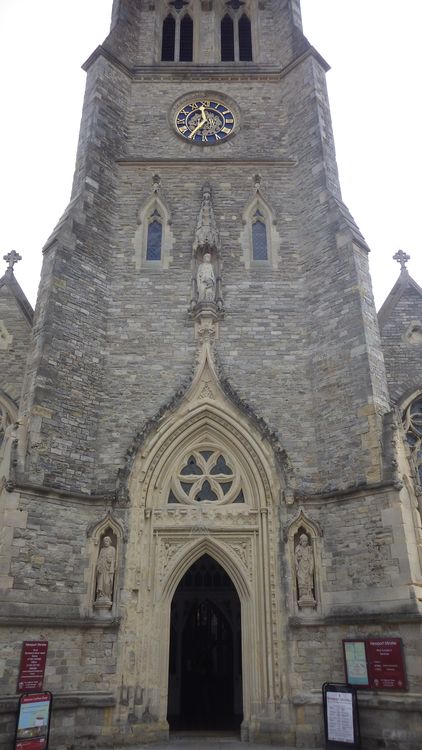Introduction

This collection comprises images, site records, a report, spreadsheets, CAD data, and photogrammetry from an archaeological evaluation at the Minster Church of St Thomas, Newport, Isle of Wight. This work was undertaken by Oxford Archaeology in August 2019.
The work involved the excavation of 12 test pits within the existing floor to investigation the remains of the early medieval church and to help inform the design of a new floor and lift installation. The evaluation revealed a number of archaeologically significant deposits and structures associated with and pre-dating the existing mid-19th-century church, enabling the potential impact of the proposed scheme to be determined.
Two foundation structures were revealed that were stratigraphically proven to be earlier than the present 19th-century church. These include the possible archway foundation in test pit 5 and the mass-filled foundation in test pit 9. Test pits 3, 5, 9, and 10 revealed the foundations of the present church. In each case, these were constructed using fragments of stone that appear to have been reused from an earlier structure. In particular, the large dressed block of Caen stone at the base of the column in test pit 10 would definitely have been part of a significant structure and would not originally have been intended as a foundation stone.
In-situ burials were discovered in test pits 6 and 12 at the southern edge of the church. Although no dating evidence was recovered in association with the crypt in test pit 6, these are most likely to have been constructed within the present church. The two inhumations in test pit 12 were interpreted as pre-dating the adjacent brick-and-limestone crypt. They also incorporated late medieval or early post-medieval floor tiles and probably pre-date the 19th century church.
Sterile soil horizons were identified within the nave of the existing church within test pits 8 and 10. These were not observed in the other excavation areas due to later activity and disturbances. The test pits indicate that the earliest remains were found towards the middle and south aisles of the existing church.
Archaeological remains survived in situ beneath the wooden raised floor. It is also likely that structural remains and human burials are present immediately beneath the tiled floor surface.




